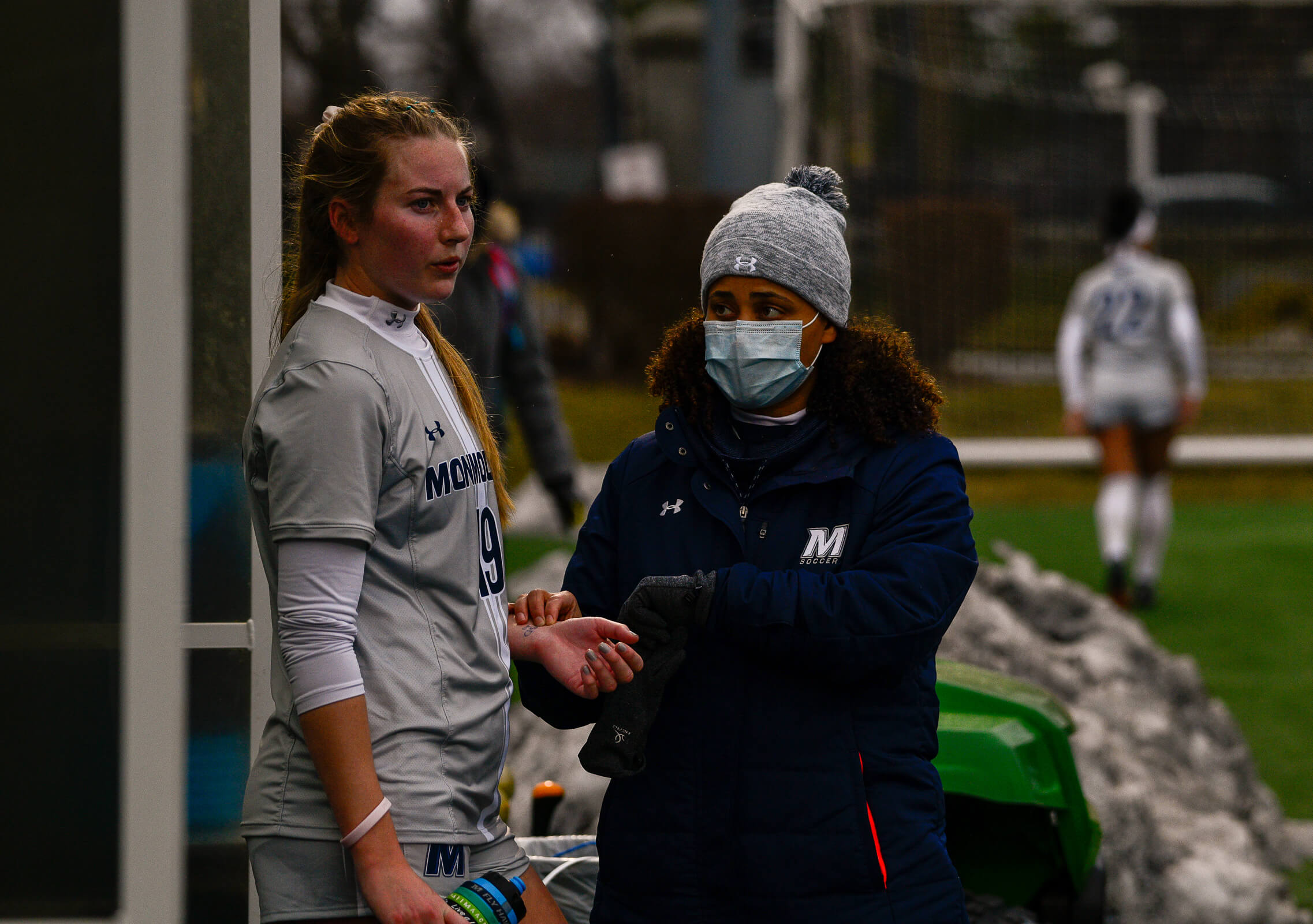
Game On
With every Hawks team back in action this spring, keeping players healthy enough to compete during a pandemic was no small task.
Simon Rosenblum and the Monmouth Athletics Sports Medicine staff face difficult decisions every season. They work tirelessly to return athletes to the playing field, but that charge can be contested by the risk of clearing someone for competition too soon.
In 2020, however, only one decision rippled through their athletic community. Events, careers, moments were put on hold.
The COVID-19 pandemic was indiscriminate in its wrath on collegiate athletic programs. At Monmouth, every player in every sport was sidelined for health and safety precautions for most of 2020.
“It was a difficult time for our athletes last fall,” says Rosenblum, associate athletic director for sports medicine. “They really struggled coming to terms with their seasons being shut down. Maybe the toughest part was there was no light at the end of the tunnel.”
Spring is the season of new beginnings, and at Monmouth, the athletics program is in full bloom. Every sport—23 men’s and women’s programs—has been competing this spring. It’s been a massive undertaking for athletics support staff, and perhaps no office has been leaned on more than sports medicine.
Rosenblum and nine staff members are juggling the traditional duties of athletic training with the additional responsibilities brought on by competing in a pandemic: performing regular testing and contact tracing, and providing guidance on new protocols that keep everyone safe.
“It’s been a little crazy, but the coaches and athletes have been outstanding in modifying routines and adjusting to the guidelines,” says Rosenblum. “There’s a lot more structure to practices, limits on how many athletes can be in the locker room, and changes in how we schedule training appointments. Athletes had to be cleared just to get here.”
Upon returning to campus last January, student-athletes needed to test negative for the virus or show proof of a negative test within five days of their return. University leadership also supported a more rigorous testing schedule than the one recommended by the NCAA.
Throughout the spring, every Monmouth athlete is being tested once per week, even athletes playing low-risk transmission sports (e.g., swimming, tennis, track and field) in which the NCAA doesn’t require any testing. Men’s and women’s basketball—classified as a high-risk transmission indoor sport—had its players tested three times per week.
Speaking in early March, Rosenblum said they were averaging more than 300 tests per week, and he expected those numbers to increase.
The University also formed a contact tracing team for students who test positive. Associate Athletic Trainer Siobhan Huggins-Sullivan is the athletics representative, and according to Rosenblum, “knows how to get the right answers from people.”
Athletes are creatures of habit by nature, but adapting has become their new routine. Locker rooms are used in shifts to avoid large indoor gatherings and maintain social distancing. Athletes must schedule treatment appointments online. Trainers continue to provide all services but have extended office hours to limit the number of visitors at any one time.
Along the way, Rosenblum has preached common sense when advising athletes about their behaviors outside the athletic arena. Keep your circles small, avoid busy places, wear face coverings, and don’t hang out with other teams. Players have been receptive to the message, he says.
“The athletes are all too aware that seasons can be shut down in an instant, so they’re looking out for each other. These kids just want the opportunity to play the sport they love, so they’re avoiding the interactions they’re accustomed to as college students.”